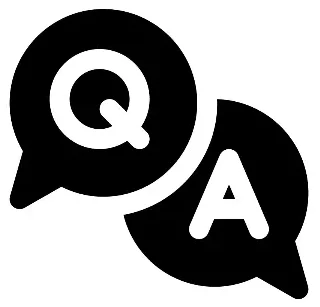measure and optimize social media marketing campaigns coursera week 4 quiz answers
Telling Your Full Campaign Story Practice Quiz
1. What's the goal of presenting your campaign results?
- To show what actions you took to achieve your goals
- To show what insights you found in the campaign data
- To show how you’ll iterate on campaigns in the future
All of the above
3. Why would you state your objectives?
- To show how you’ll put your goals into action
- To bridge the narrative of your presentation from goals to campaign
- To explain your audience your strategy
All of the above
4. Why is it good to state your KPIs before talking about creating your campaign?
- Since KPIs are tied to goals and objectives, it shows you’re thinking through every step of your campaign
- Since KPIs are tied to goals and objectives, you measure them before setting up your campaign
- Since KPIs are the first thing you consider, you determine your KPIs before your goals and objectives
There’s no reason — you can talk about KPIs anywhere
5. How much information should you give about your campaign?
- You don’t need to tell your audience anything about your campaign, since you already know about it
- Take your audience through each detail of how you set up your campaign, step-by-step
- An overview of how you set up your campaign, including intentions, audience, placements, duration, and budget
Only tell your audience about your campaign budget
6. What data points might you include when talking about awareness campaign results?
- Link clicks, engagement, and landing page views
- Likes, shares, and comments
- Ad recall, reach, and impressions
Purchases, add to cart, and payment info
7. What data points might you include when talking about consideration campaign results?
- Link clicks, engagement, and landing page views
- Online store traffic, and lead generation
- Purchases, add to cart, and payment info
Ad recall, reach, and impressions
8. What data points might you include when talking about conversion campaign results?
- Purchases, add to cart, and payment info
- Likes, shares, and comments
- Ad recall, reach, and impressions
Link clicks, engagement, and landing page views
9. What would you do when asked about causal relationships?
- Point to the results of your experiments
- Explain how A/B testing showed you that your campaign did get results
- Explain how attribution studies show the path of customer behavior, and the path from campaign to result
All of the above
10. Why would you include plans for future campaigns in your presentation?
- To show that you’ve drawn conclusions from your data that can be used to iterate
- To show that you’re proactively thinking ahead to the next campaign
- To demonstrate tangible ways to improve results in the future
All of the above
Communicate Your Marketing Results Quiz
11. What data might you include when presenting on conversion KPIs?
- Charts and graphs on traffic and engagement
- Charts and graphs on bidding strategy and auctions
- Charts and graphs on reach and impressions
Charts and graphs on lead gen sign-ups and purchases
12. What might be a good tactic when thinking about opening and closing your presentation?
- Look at them as separate, unrelated parts of your presentation
- Open and close by stating your results
- Skip the opening and closing — they’re not needed
Connect the opening and closing with a story, a question, or an interesting fact
13. What are some slides you'd want to include in your slide deck?
- How you brainstormed your creative
- Goals, Objectives, and KPIs
- The details of how Facebook conducts their bidding and auctions
All the data results you could find
14. What is a best practice to keep in mind when presenting data visually?
- Add all the labels and chart info that you can
- Include all the data you found
- Only show numbers in tables
Get rid of excess information to make the slides uncluttered and clear
15. You're anticipating audience questions, especially one asking how the budget was spent and if money was wasted. You'd then include a slide addressing what?
- How you set up your campaign
- Causal relationships
- ROAS, ROI, and possible CAC
Your campaign objectives
16. How should you be thinking about your slide deck during a presentation?
- Make sure it has branded colors and fonts
- Make sure it presents data clearly and visually
- Make sure it just lists bullet points
All of the above
17. When creating a presentation, what should you focus on first?
- How you set up your campaign
- Future plans
- Goals, Objectives, and KPIs
Data results
18. You want to talk about an experiment you ran that showed the difference between two audiences being marketed to. Which of the following would you talk about?
- A/B Testing
- Lift study
- Attribution study
Holdout study
19. It's the day of your presentation, and you are NOT confusing your audience. Why?
- You spent time thinking about how to communicate your information clearly to them
- You’re talking slowly and leaving pauses so they can follow you
- You created clear, uncluttered slides
All of the above
20. If you were presenting your data results, and wanted to talk about your revenue as a ratio to what you spent, what number would you include?
- LTV
- ROI
- ROAS
CAC

